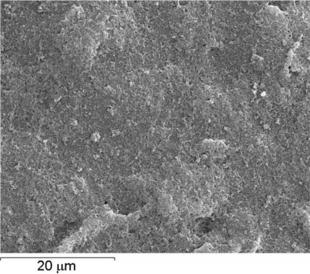当前位置:
X-MOL 学术
›
Electroanalysis
›
论文详情
Our official English website, www.x-mol.net, welcomes your
feedback! (Note: you will need to create a separate account there.)
Carbon Nanofiber and Meldola Blue Based Electrochemical Sensor for NADH: Application to the Detection of Benzaldehyde
Electroanalysis ( IF 2.7 ) Pub Date : 2018-09-17 , DOI: 10.1002/elan.201800472 Ana Maria Titoiu 1 , Maxime Lapauw 2 , Georgiana Necula-Petrareanu 3 , Cristina Purcarea 3 , Pablo Fanjul-Bolado 4 , Jean-Louis Marty 5 , Alina Vasilescu 1
Electroanalysis ( IF 2.7 ) Pub Date : 2018-09-17 , DOI: 10.1002/elan.201800472 Ana Maria Titoiu 1 , Maxime Lapauw 2 , Georgiana Necula-Petrareanu 3 , Cristina Purcarea 3 , Pablo Fanjul-Bolado 4 , Jean-Louis Marty 5 , Alina Vasilescu 1
Affiliation

|
Nanomaterials used in tandem with electrochemical mediators on screen‐printed electrodes enable sensitive, low cost detection of NADH with minimal interferences in real‐world samples. In this work we investigated the combination between the mediator Meldola Blue and several types of commercial screen‐printed carbon electrodes, i. e. modified with mesoporous carbon, single wall carbon nanotubes, graphene or carbon nanofibers (CNF) as NADH detectors. The sensors were compared with bare carbon electrodes and with commercially available Meldola Blue‐modified electrodes. The best sensitivity for NADH detection by amperometry was observed for Meldola Blue/CNF electrodes, and further improvement was obtained by mixing the mediator with graphene oxide prior to dropcasting. The “MB‐erGO/CNF” sensors obtained were characterized by a detection limit of 0.5 μM, a linear range of 1–300 μM and a sensitivity of 80.0±2.5 μA cm−2 mmol−1 L, 10 times higher than that of commercial sensors. While the use of graphene oxide lead to enhanced sensitivity and wider linear range, it didn't improve the operational stability as the mediator gradually desorbed from the electrodes. Furthermore, the sensors were coupled with a new NAD+‐dependent aldehyde dehydrogenase from a psychrophilic bacterium for the analysis of benzaldehyde and proven to be advantageous over commercial electrodes with Meldola Blue in circumstances where the detection was limited by NADH detection, i. e. at pH 9.5.
中文翻译:

碳纳米纤维和Meldola蓝基NADH电化学传感器:在苯甲醛检测中的应用
与丝网印刷电极上的电化学介体串联使用的纳米材料可实现对NADH的灵敏,低成本检测,而对真实样品的干扰最小。在这项工作中,我们研究了介体Meldola Blue和几种类型的商业丝网印刷碳电极(即i)之间的组合。e。用中孔碳,单壁碳纳米管,石墨烯或碳纳米纤维(CNF)改性作为NADH检测器。将传感器与裸碳电极和市售的Meldola Blue修饰电极进行了比较。对于Meldola Blue / CNF电极,观察到通过安培法检测NADH的最佳灵敏度,并且通过在滴铸之前将介体与氧化石墨烯混合可以进一步改善。获得的“ MB-erGO / CNF”传感器的特征在于检测极限为0。-2 mmol -1 L,比市售传感器高10倍。尽管使用氧化石墨烯可提高灵敏度和扩大线性范围,但由于介体逐渐从电极上解吸,因此并未提高操作稳定性。此外,这些传感器与嗜冷细菌中一种新的NAD +依赖性醛脱氢酶相结合,用于苯甲醛的分析,并且在检测受NADH检测限制的情况下,被证明优于带有Meldola Blue的商用电极。e。在pH 9.5下。
更新日期:2018-09-17
中文翻译:

碳纳米纤维和Meldola蓝基NADH电化学传感器:在苯甲醛检测中的应用
与丝网印刷电极上的电化学介体串联使用的纳米材料可实现对NADH的灵敏,低成本检测,而对真实样品的干扰最小。在这项工作中,我们研究了介体Meldola Blue和几种类型的商业丝网印刷碳电极(即i)之间的组合。e。用中孔碳,单壁碳纳米管,石墨烯或碳纳米纤维(CNF)改性作为NADH检测器。将传感器与裸碳电极和市售的Meldola Blue修饰电极进行了比较。对于Meldola Blue / CNF电极,观察到通过安培法检测NADH的最佳灵敏度,并且通过在滴铸之前将介体与氧化石墨烯混合可以进一步改善。获得的“ MB-erGO / CNF”传感器的特征在于检测极限为0。-2 mmol -1 L,比市售传感器高10倍。尽管使用氧化石墨烯可提高灵敏度和扩大线性范围,但由于介体逐渐从电极上解吸,因此并未提高操作稳定性。此外,这些传感器与嗜冷细菌中一种新的NAD +依赖性醛脱氢酶相结合,用于苯甲醛的分析,并且在检测受NADH检测限制的情况下,被证明优于带有Meldola Blue的商用电极。e。在pH 9.5下。











































 京公网安备 11010802027423号
京公网安备 11010802027423号